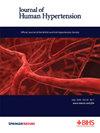CITED2 is highly-expressed and PRX4 is poorly-expressed in preeclampsia and have diagnostic values
IF 3.4
4区 医学
Q2 PERIPHERAL VASCULAR DISEASE
引用次数: 0
Abstract
This study aims to investigate the differential level of CITED2 and PRX4 in the serum of preeclampsia (PE) patients and to explore their clinical value in PE diagnosis, severity assessment, and pregnancy outcomes. A total of 110 singleton pregnant women with PE were included, consisting of 57 cases of mild PE and 53 cases of severe PE, with 110 healthy singleton pregnant women enrolled as the normal control. The baseline clinical characteristics were analyzed using chi-square test and independent samples t-test. CITED2 and PRX4 concentrations were measured by ELISA and their diagnostic efficacy for PE was evaluated through ROC curves. Multivariate logistic regression analysis was conducted to identify factors associated with adverse pregnancy outcomes in PE patients. Compared to the healthy group, CITED2 serum levels in PE patients were significantly increased, while PRX4 levels were significantly decreased. CITED2 and PRX4 can diagnose PE, distinguish between mild and severe PE, and be associate with adverse pregnancy outcomes in PE patients. The diagnostic efficacy was better when CITED2 and PRX4 were combined. The serum levels of CITED2 were further elevated and PRX4 levels were further reduced in patients with severe PE and adverse pregnancy outcomes. CITED2 was an independent risk factor and PRX4 was a protective factor for adverse pregnancy outcomes in PE patients. In conclusion, CITED2 and PRX4 can diagnose PE, assess PE severity, and are associated with PE outcomes.

CITED2在子痫前期高表达,PRX4低表达,具有诊断价值。
本研究旨在探讨CITED2和PRX4在子痫前期(PE)患者血清中的差异水平,并探讨其在PE诊断、严重程度评估及妊娠结局中的临床价值。共纳入110例PE单胎孕妇,其中轻度PE 57例,重度PE 53例,健康单胎孕妇110例作为正常对照。基线临床特征分析采用卡方检验和独立样本t检验。采用ELISA法检测CITED2、PRX4浓度,并通过ROC曲线评价其对PE的诊断效果。进行多因素logistic回归分析以确定与PE患者不良妊娠结局相关的因素。与健康组相比,PE患者血清CITED2水平显著升高,PRX4水平显著降低。CITED2和PRX4可以诊断PE,区分轻度和重度PE,并与PE患者不良妊娠结局相关。CITED2与PRX4联合应用诊断效果更好。严重PE和不良妊娠结局患者血清CITED2水平进一步升高,PRX4水平进一步降低。CITED2是PE患者不良妊娠结局的独立危险因素,PRX4是PE患者不良妊娠结局的保护因素。综上所述,CITED2和PRX4可以诊断PE,评估PE严重程度,并与PE预后相关。
本文章由计算机程序翻译,如有差异,请以英文原文为准。
求助全文
约1分钟内获得全文
求助全文
来源期刊

Journal of Human Hypertension
医学-外周血管病
CiteScore
5.20
自引率
3.70%
发文量
126
审稿时长
6-12 weeks
期刊介绍:
Journal of Human Hypertension is published monthly and is of interest to health care professionals who deal with hypertension (specialists, internists, primary care physicians) and public health workers. We believe that our patients benefit from robust scientific data that are based on well conducted clinical trials. We also believe that basic sciences are the foundations on which we build our knowledge of clinical conditions and their management. Towards this end, although we are primarily a clinical based journal, we also welcome suitable basic sciences studies that promote our understanding of human hypertension.
The journal aims to perform the dual role of increasing knowledge in the field of high blood pressure as well as improving the standard of care of patients. The editors will consider for publication all suitable papers dealing directly or indirectly with clinical aspects of hypertension, including but not limited to epidemiology, pathophysiology, therapeutics and basic sciences involving human subjects or tissues. We also consider papers from all specialties such as ophthalmology, cardiology, nephrology, obstetrics and stroke medicine that deal with the various aspects of hypertension and its complications.
 求助内容:
求助内容: 应助结果提醒方式:
应助结果提醒方式:


